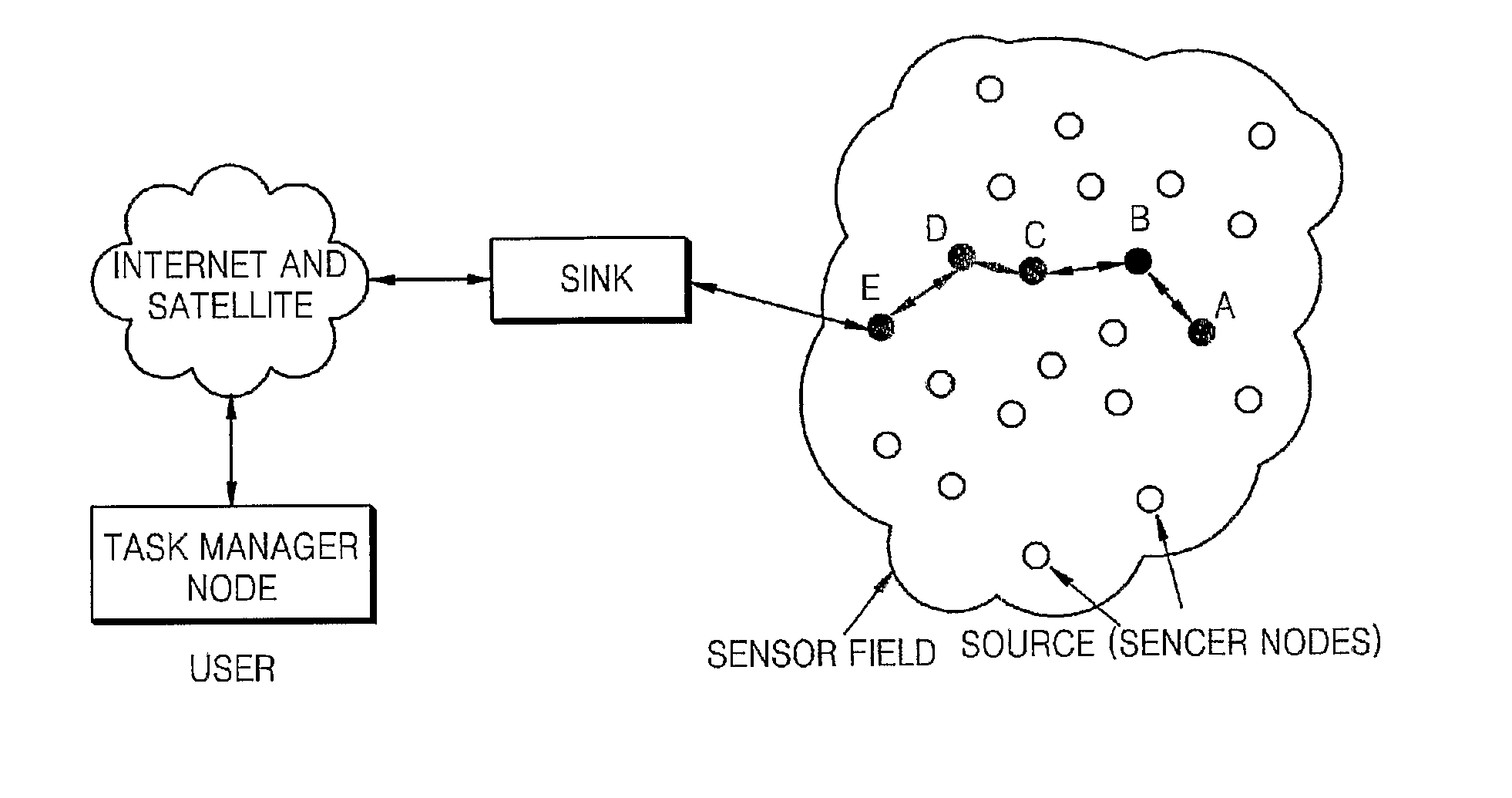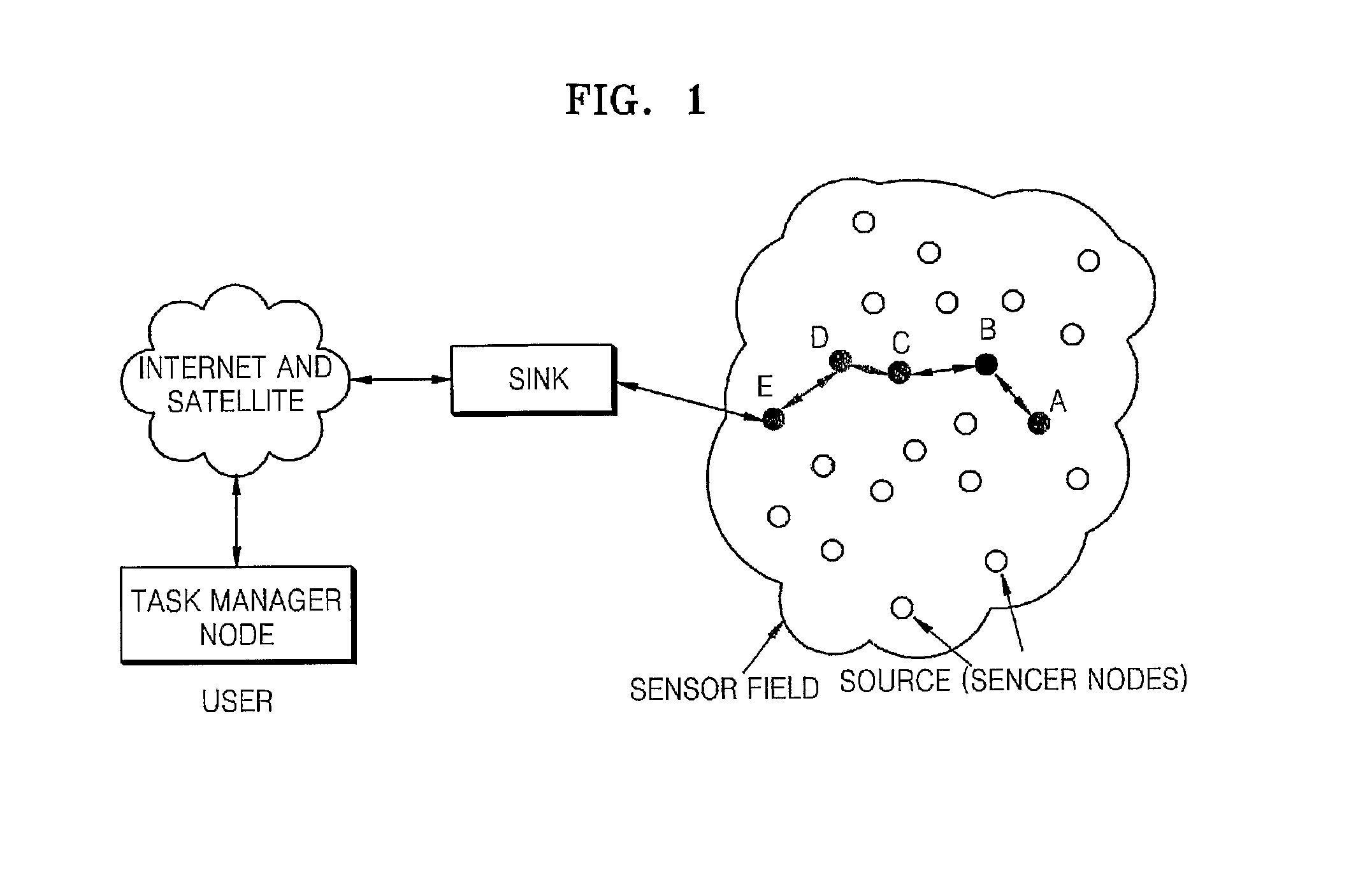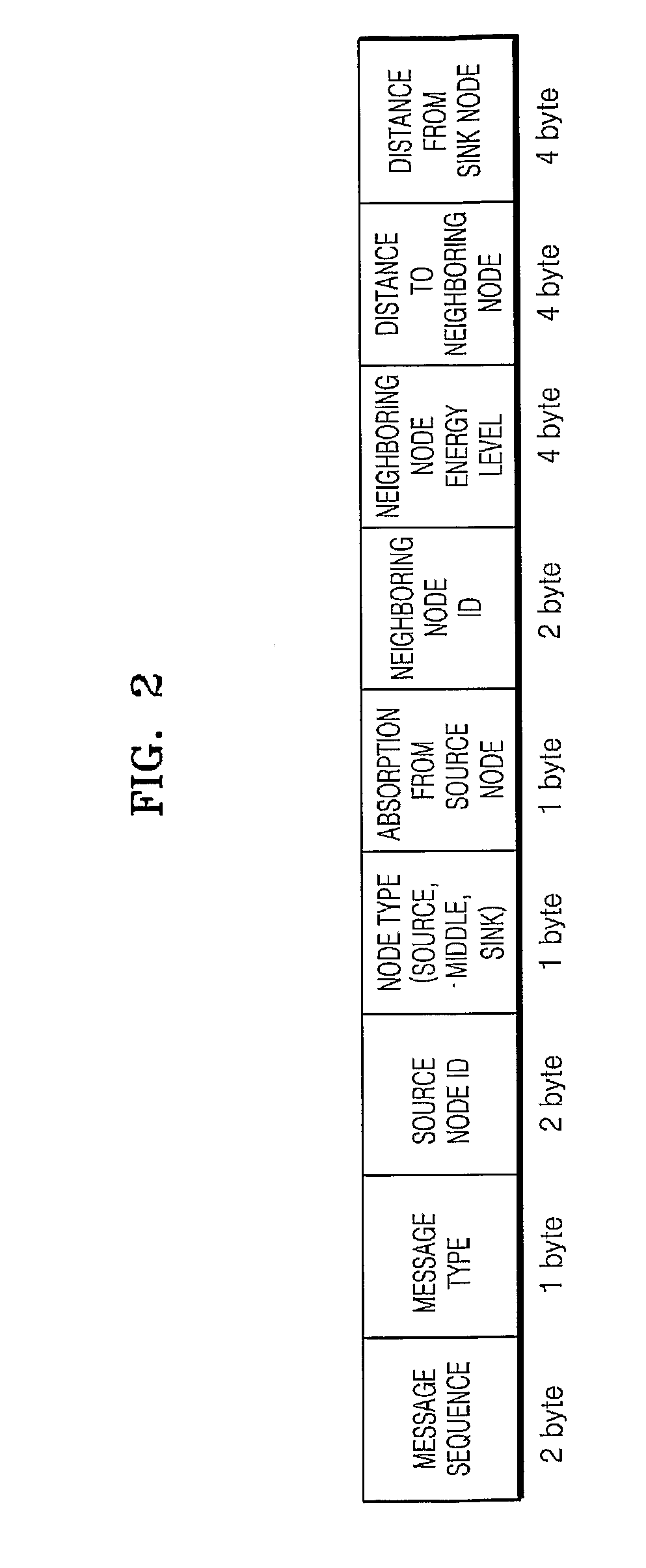Multi-path routing method in wireless sensor network
a wireless sensor network and multi-path routing technology, applied in the field of multi-path routing methods, can solve the problems of low price and low power, source node needs microminiaturization, and difficulty in using the existing ip address system
- Summary
- Abstract
- Description
- Claims
- Application Information
AI Technical Summary
Benefits of technology
Problems solved by technology
Method used
Image
Examples
Embodiment Construction
[0064]In the following detailed description, reference is made to the accompanying drawings that show, by way of illustration, specific embodiments in which the present invention may be practiced. These embodiments are described in sufficient detail to enable those skilled in the art to practice the present invention.
[0065]The suggested algorithm includes three steps of initialization, path search, and data transmission and maintenance.
[0066]Each node identifies its own energy level and a node loss probability, and all neighboring nodes within a transmission radius exchange and share such information with one another.
[0067]The first step is an initialization step. In the initialization step, when a source node senses information, the source node floods the entire network with a Hello message to obtain information on the existence and position of a sink node. The format of the Hello message is illustrated in FIG. 2.
[0068]As illustrated in FIG. 2, the Hello message in the initializati...
PUM
 Login to View More
Login to View More Abstract
Description
Claims
Application Information
 Login to View More
Login to View More - R&D
- Intellectual Property
- Life Sciences
- Materials
- Tech Scout
- Unparalleled Data Quality
- Higher Quality Content
- 60% Fewer Hallucinations
Browse by: Latest US Patents, China's latest patents, Technical Efficacy Thesaurus, Application Domain, Technology Topic, Popular Technical Reports.
© 2025 PatSnap. All rights reserved.Legal|Privacy policy|Modern Slavery Act Transparency Statement|Sitemap|About US| Contact US: help@patsnap.com



